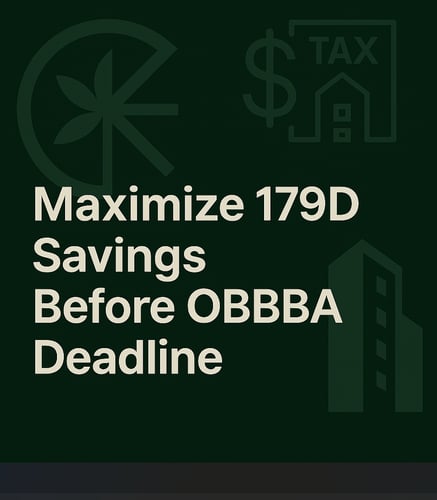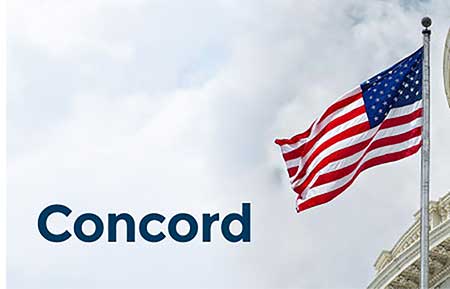In the fast-paced world of commercial real estate and construction, the Section 179D tax deduction is a powerful tool for encouraging energy-efficient buildings. It offers significant tax savings for newly constructed buildings or upgrades to interior lighting, HVAC, and building envelope systems. But with the One Big Beautiful Bill Act (OBBBA) introducing changes effective as of July 4, 2025, and confusion around deadlines, forms, and compliance causing hesitation—especially among architects, contractors, and design professionals—it's easy to get tripped up by misinformation. You've likely heard colleagues venting about hurdles associated with securing allocation letters or questioning if retrofits even count.
At Concord, we've been guiding clients of all sizes on a national basis through the process of unlocking major tax savings with 179D since 2009. Over those years, thousands of projects, hundreds of clients, and billions of dollars in tax savings we’ve helped our clients capture, we’ve encountered myths and misconceptions working with clients of all sizes on a national basis. Drawing from fresh industry discussions and the latest updates, let's dismantle nine of the most talked-about myths so you can move forward with confidence.
With 179D deduction rates worth up to $5.81 per square foot for projects placed in service in 2025, now's the time to capitalize before OBBBA eliminates eligibility for new projects starting after June 30, 2026.
Myth 1: Only new construction projects qualify for 179D
Imagine pouring resources into revamping an aging office space with energy-smart windows and efficient boilers, only to assume 179D is off-limits because it's not a ground-up build. This myth has been shared frequently by property owners and managers, and design firms working for tax exempt entities, overlooking upgrades on older sites.
Reality: Existing buildings undergoing retrofits or renovations are fully eligible, provided they hit at least 25% energy savings against ASHRAE benchmarks. From historic offices to modernized factories, if your enhancements target interior lighting, HVAC, or the envelope, you qualify. We’ve helped our clients claim 179D deductions on thousands of retrofit projects they had previously believed weren't eligible, generating substantial savings for their bottom line.
Myth 2: The Deduction is only for Building Owners
As an architect, engineer or design professional working on a tax-exempt owned building, you might feel side-lined, thinking the tax benefits of 179D are only available to the owner while your efforts to make their buildings more efficient go unrewarded by the tax code. This has come up time and again among professionals debating who is able to capture 179D benefits from public-sector work.
Reality: Design professionals have been able to capture the 179D deduction for their work on government owned projects since 2008 through the allocation process. For projects placed in service since January 1, 2023 allocations are available to architects, engineers, ESCOs and other design professionals from an expanded universe of tax-exempt owners. Meaning if your firm has done work on new construction or retrofit projects owned by governmental entities, tribal governments, or non-profits you are able to claim the 179D deduction via allocation, including retroactively for projects already placed in service, for those projects as well. A recent engineering client of ours was amazed to secure over $1,600,000 in total 179D deductions for their work on houses of worship alone!
Myth 3: 179D Deductions are too small to make a difference
We’ve encountered professionals who brush off 179D as insignificant, misunderstanding the potential value it holds for their firms. Not understanding the potential value 179D reflects for their business, and their bottom line, this myth is perhaps the easiest to dispel, with very simple athematic.
Reality: For projects placed in service In 2025, the 179D deduction is worth up to $5.81. For a 50,000-square-foot facility, that's up to $290,500, hardly a trivial amount. We've seen skeptical clients see these "minor" deductions transform into 7 figure game-changing savings, particularly as deduction rates have increased and the potential projects eligible to be claimed have expanded.
Myth 4: The 179D Deduction is expiring soon and worthless after OBBBA
Recent headlines about OBBBA's changes have sparked panic, with professionals fearing it's too late to bother, assuming all opportunities vanish overnight.
Reality: OBBBA eliminates the deduction for projects where construction begins after June 30, 2026, but you can claim it for any eligible work started before then meaning that there are many years of eligible projects left. Retroactive claims for past qualifying projects remain viable, and previous extensions of similar provisions suggest monitoring for updates. We've helped clients fast-track 2025 initiatives to lock in deductions before the cut off. For more details check our latest blog post. Also, keep in mind that beginning of construction might not be as straight forward as you think, so it is important to discuss your project portfolio with our professionals so we can help you identify and maximize opportunities.
Myth 5: The certification process is too complicated and disruptive
Tales of bureaucratic nightmares have deterred many from pursuing 179D despite the clear potential to capture significant benefits.
Reality: Certification involves energy modeling and a qualified inspector's review, but it's manageable with experts. Inspections are brief and non-intrusive, verifying efficiencies without downtime. At Concord, we streamline everything: modeling, docs, and compliance. Clients often share how it felt seamless, far outweighing the minimal administrative burden associated with pursuing this opportunity. At Concord, all our engagements are structured to be win-win, it is one of the core values of the firm and guides our work with the firms we are honored to serve. Put simply, if we aren't able to generate a deduction for your firm, you owe us nothing. We believe strongly in only entering win-win client engagements and put our money where our mouth is.
Myth 6: Complying with Prevailing Wage and Apprenticeship (PWA) requirements is impossible for most projects
In the wake of IRA updates to the 179D deduction and the introduction of “bonus rates” for projects able to meet PWA requirements we have heard many professionals and smaller teams voiced frustration, claiming PWA rules are overly burdensome, making the enhanced deduction unattainable.
Reality: PWA compliance boosts your deduction fivefold (up to $5.81 per square foot), and it's feasible with proper planning and the right team in place. At Concord, we specialize in helping clients navigate and document these requirements. We’ve built the only purpose-built data, stakeholder and workflow management software platform designed to manage these requirements. In the process we've turned "impossible" into routine for projects large and small, unlocking maximum savings without the headache.
Myth 7: Detailed energy modelling using DOE-Approved software isn't required when submitting Form 7205 for the 179D Deduction
We’ve encountered some stakeholders, and less than scrupulous competitors, who have assumed that basic calculations or simplified estimates suffice for demonstrating the energy savings required to claim the deduction , leading to incomplete submissions and potential rejections.
Reality: Form 7205 requires taxpayers to include information on the “qualified professional” who is certifying the project meets required energy savings, and that those savings have been validated with comprehensive energy modelling with DOE-approved software that accurately demonstrates energy savings from HVAC, lighting, and the building envelope systems as compared to relevant ASHRAE standards. This whole-building simulation, performed by a qualified third party, ensures your claim meets IRS thresholds. At Concord, we handle the entire energy modeling process in house, completed by our internal engineering team, providing detailed results and certifications to support seamless filings and avoiding costly errors. We are so confident about our process that we include complimentary audit defense as part of every engagement, and we have never had a study/certification completed by our professionals disallowed on examination by the IRS.
Myth 8: Allocation letters are unnecessary or hard to obtain for Designers
Designers have recently lamented the "red tape" of allocation letters, with some believing they’re obsolete or that tax-exempt owners rarely provide them.
Reality: For tax-exempt projects, an allocation letter signed by the owner is essential to for design professionals to claim the 179DE deduction. The IRA broadened these opportunities by expanding eligibility to more tax-exempt entities starting in 2023, but the letter requirement remains. It's straightforward—outlining your role and the amount—and we've facilitated dozens, often retroactively for qualifying cases. At Concord, our dedicated internal government and owner relations team assist in drafting and securing these, turning potential roadblocks into quick approvals for design professionals.
Myth 9: Projects need to be LEED certified to qualify
Many design professionals and building owners have been led to belive that their buildings or projects need to meet the most stringent LEED standards to qualify for the deduction
Reality: 179D is a deduction driven by the energy efficiency of the newly constructed or retrofitted building as compared to relevant ASHRAE standards. Those standards do not require a building to be LEED certified to meet required energy efficiency standards to qualify for the deduction. We’ve helped clients generate significant 179D deductions for projects that they otherwise would have not pursued for fear of them being unable to meet energy savings requirements. The fact is if you have built or designed a newly constructed or retrofitted building it is worth evaluating for eligibility, and if you work with Concord we’ll evaluate any projects you're interested in pursuing at no cost to determining eligibility and provide you with a projection of the potential 179D benefits it could generate.
Conclusion
Clearing up these myths is about more than information—it's about giving you the tools to seize opportunities. With 2025 deduction rates being worth up to $5.81 per square foot, OBBBA's changes on the horizon, and expanded project eligibility for projects completed since 2023, there has never been a better time to evaluate your projects for 179D eligibility. At Concord, we provide a tech enabled service offering that ensures full compliance, maximizes benefits, and allows for you to have the peace of mind that comes from working with an industry leader. Intrigued? Check our news page for the latest or reach out for a free consultation. Let's convert efficiency into tangible tax victories—before time runs out. Book a free consultation with our experts to get a gratis assessment of your projects.
Note: Tax laws evolve rapidly; always consult a tax professional for personalized advice based on the most current IRS guidance.



